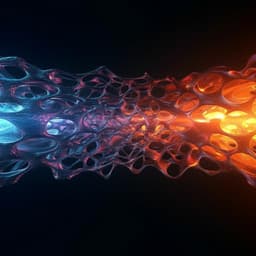
Physics
Electronic response of a Mott insulator at a current-induced insulator-to-metal transition
C. T. Suen, I. Marković, et al.
Unlock the mysteries of the Mott insulator Ca₂RuO₄ with groundbreaking research conducted by a team of experts. This study reveals how d.c. current induces a fascinating insulator-to-metal transition, shedding light on current-induced modifications to Ca₂RuO₄'s electronic states and their implications.
~3 min • Beginner • English
Related Publications
Explore these studies to deepen your understanding of the subject.







